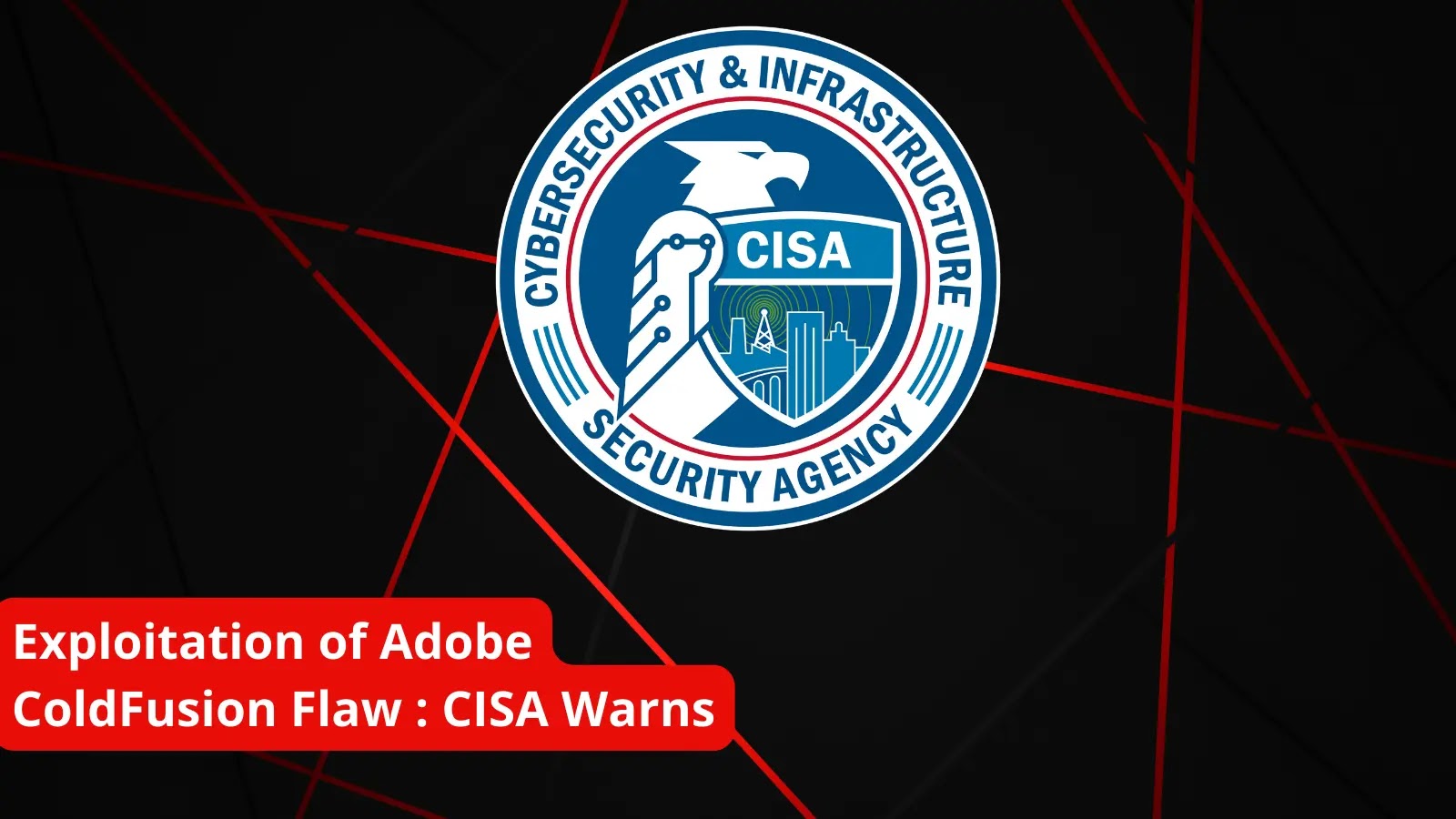A recent cybersecurity advisory from CISA has brought to light a formidable cyber onslaught, revealing an alarming breach where faceless hackers capitalized on a critical vulnerability within Adobe ColdFusion.
This exploit targeted government servers, sending shockwaves through the cybersecurity landscape.
At the core of this ominous infiltration lies CVE-2023-26360, a vulnerability casting its sinister shadow over ColdFusion versions 2018 Update 15 and earlier, as well as 2021 Update 5 and earlier.
The scope widens as even unsupported installations of ColdFusion 2016 and 11 become vulnerable, amplifying the urgency for comprehensive cybersecurity measures.
Exploiting the Breach – Unraveling the Attack
The exploit, a digital skeleton key, granted the hackers unfettered access, enabling them to execute arbitrary code on the compromised government systems.
This breach, far beyond mere data access, opened the gates to potential data exfiltration, system manipulation, and the ominous specter of lateral movement within the network.
The recently issued advisory, titled “AA23-339A Threat Actors Exploit Adobe ColdFusion CVE-2023-26360 for Initial Access to Government Servers,” delves into the intricate details of this cyber maelstrom.
Network defenders find a trove of invaluable insights within its pages, dissecting the incident and unraveling the anatomy of the attack.
The attackers’ modus operandi included targeting public-facing web servers running outdated ColdFusion versions.
Microsoft Defender for Endpoint detected the malfeasance, but the die was cast—the servers were compromised.
A meticulous technical breakdown reveals the exploitation of the vulnerability through HTTP POST commands and the subsequent deployment of malicious code.
Incidents Unveiled – A Dual Front Assault
The advisory uncovers two distinct incidents orchestrated by possibly divergent threat actors.
In Incident 1, the hackers infiltrated a ColdFusion v2016.0.0.3 server, executing a labyrinthine sequence of actions.
Incident 2 witnessed the compromise of a ColdFusion v2021.0.0.2 server, unveiling a different set of tactics, including the deployment of a remote access trojan (RAT) and attempted exfiltration of sensitive files.
The aftermath of these incidents serves as a stark reminder of the imperative to patch known vulnerabilities, particularly those haunting internet-facing systems.
Beyond patching, organizations must fortify their defenses with secure configurations, network segmentation, application control, and the unyielding bulwark of multi-factor authentication.
CISA issued a resounding directive, urging organizations to update all ColdFusion versions plagued by CVE-2023-26360.
Their guidance extends to prioritizing patching based on the Known Exploited Vulnerabilities Catalog, implementing secure configurations, disabling default credentials, and fortifying defenses with network segmentation and web application firewalls.
In conclusion, the advisory not only imparts critical directives but also unveils the attackers’ tactics, techniques, and procedures (TTPs).
Armed with this knowledge, security professionals can craft more potent detection and prevention strategies, fortifying the digital realm against the ever-evolving landscape of cyber threats.






